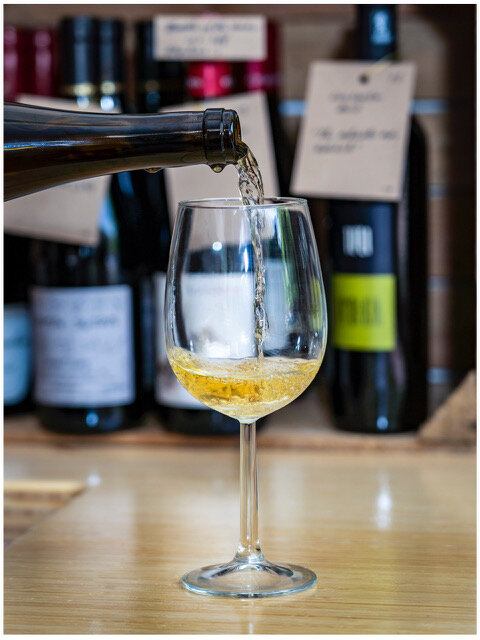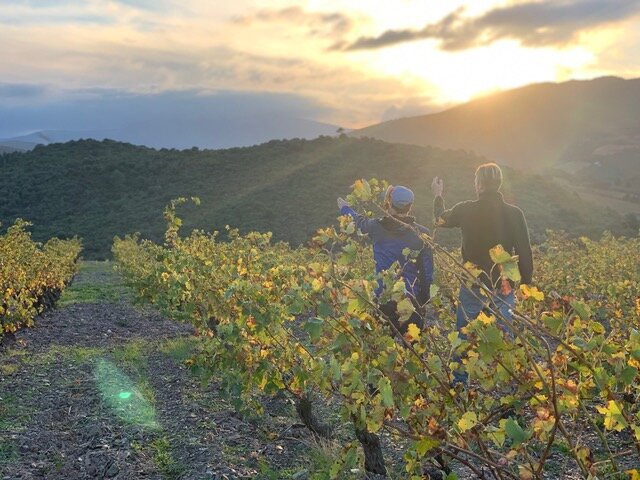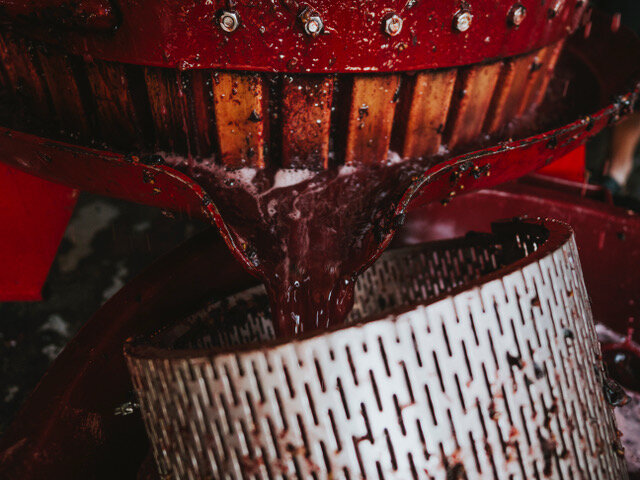
Something ancient as something new
Let’s take a moment to see beyond trendy labels. “Natural Wine” is just wine. healthy grapes and fermentation, aged in various types of large containers and then bottled (sometimes bagged or canned) for consumption. For thousands of years people have been making “Natural Wine” and calling it wine. The alcoholic beverage that most people in the western world have come to call wine often has a few more ingredients added beyond the grapes and their yeast covered grape skins- ingredients that are not harvested from in or around the growing of the grapes. It is only in the last century or so that we have been shifting our concept of wine to this more complex creation that some of us prefer to name as “Industrial Wine”. So Natural Wine is simple and pure wine…, but it is also a shift of awareness about what is important.

Emphasis on Craftsmanship
A new generation of winemakers and wine drinkers are celebrating the craft of making wine without additives. As it often goes with placing limitations on creativity, these makers accept that nothing (or very little) can be added to the wine, and instead channel their creativity toward exploring the thousand plus grape varietals used to make wine. They are combining sometimes novel blends with a unique terroir to craft a product with a distinctive signature. Sometimes a cuvée will have a name like we give to our children or a pet (see Katla Wines) and sometimes these cuvées will exist for only one vintage year, never to be seen again. The decision making that informed the crafting of the cuvée, the designing of the label, the transmitting of the unique story of that cuvée to the distribution network for delivery to the consumer… all these efforts coalesced around a single small batch release of something that could be 600 bottles!
An economic minded thinker (as many of us have been trained to be) would expect these few bottles to be very expensive…, and then find out that they are not. Most wine shops are retailing the bulk of their natural wine between €15 and €25, aligning with the price-point expectations of any wine enthusiast that buys wine from a reputable wine shop.
So while we try to make economic sense of what these craftsmen are doing, they are already on to their next creation. And it seems that they become better at their craft each year, regardless of what variables or “limitations” nature brings to them on any given year.

Towards the local
On one of my first visits to a winemaker, I was surprised to spend the first few hours touring around the various vineyard plots and learning, in great detail, about the geology of the land. This geology lesson included concepts such as soil type and water retention, yet it served as a bridge to tell the story of the people that have lived with this land for untold generations. This narrative weaving of the heritage and culture within the terroir blurred lines in my mind. I was told about certain past choices made by previous generations of winemakers, reoccurring challenges faced by the individuals today in relationship to the microclimate of this hill or that hill, and the general mood of the surrounding villages as a new generation approaches the craft with a divergent ethos. This local community is certainly not unified in thought or in practice, and this tension adds texture to an already layered story unfolding before our eyes at what seems to be an accelerating pace of change.
Many of us are familiar with the question regarding whether a particular year “was a good year or not?” for wine. With natural wine, that question (simply put) seems to pull us further away from where we are trying to be. We want to be near the winemaker, the terroir, and the continuous interactions that weave this relationship into being. Like going to a dinner party and sitting next to someone new and intriguing, we become interested in the existence of that person him or herself. So we take time to look at and understand a micro-climate itself, rather than data points that allow us to arrive quickly at reductive conclusion so that we can move on with our day. These are the types of conversations that occur later in the evening when we’ve settled into the dinner party and lost track of time. And these are the types of conversations that discriminate between the local and the colonial approach. Understanding the decisions made by the winemakers through the conversations that they have with the land and climate offer up to the outsider an intimacy about the land, the craft, and the life of the person who produced this substance that we are about to put inside our body.
These kind of stories make the wine exciting to drink as we welcome the elixir inside, have our own conversation with it, and are transformed by it.

The retail role
This expanding offering of wine is like a Cambrian explosion of biodiversity… or at least stepping out of a monoculture field into some kind of intentionally curated food forest. Orange wine, white wine made with red grapes, new climate change resistant hybrid varietals, red and white blends, numerous fermentation methods, and biodynamics, all contributing to a burgeoning diversity of wine product from an increasing number of new and converted natural wine makers. Many of these colorful offerings will charm anyone with a slight penchant for a well delivered story and an appetite for paradigm shift.
Those of us involved with delivering the physical product to the consumers are standing in an abundant and diverse garden sometimes feeling a little bit of harvest anxiety.… so many options! And yet we are in a position to connect the (often) urban dwelling person with an intimate account of a maker in a rural setting living a very different life experience. It can be thought of as a product assisted storytelling sale rather than the other way around. And as the storyteller, we have to be careful not to be overly distracted or bogged down by the growing quantity of shiny new products coming available, and to make sure not to compromise the attention we give to the quality of stories that we represent. Quality vs quantity is an important distinction here. After all, we are using alcohol as a vehicle for an experience that is multi-sensory and highly imaginative- and is an intentional shift away from the alcohol component as the focus. People can only consume so much alcohol and we should not be encouraging an increase in the quantity of alcohol consumption but rather the quality of the consumption (which may even slow down the quantity). The retailer has the opportunity to design the customer experience and be a powerful guide to the consumer of wine.
And so, the Natural Wine movement is asking us to shift some of the awareness from the product to the story, and to transact in quality storytelling as much as any physical product.
Special natural wine retail experiences in and around Amsterdam
Selection Sauvage
Chenin Chenin
Vleck
Fiasco
ASOP wines (Haarlem)
Natural Wine drinking and storytelling in Amsterdam
